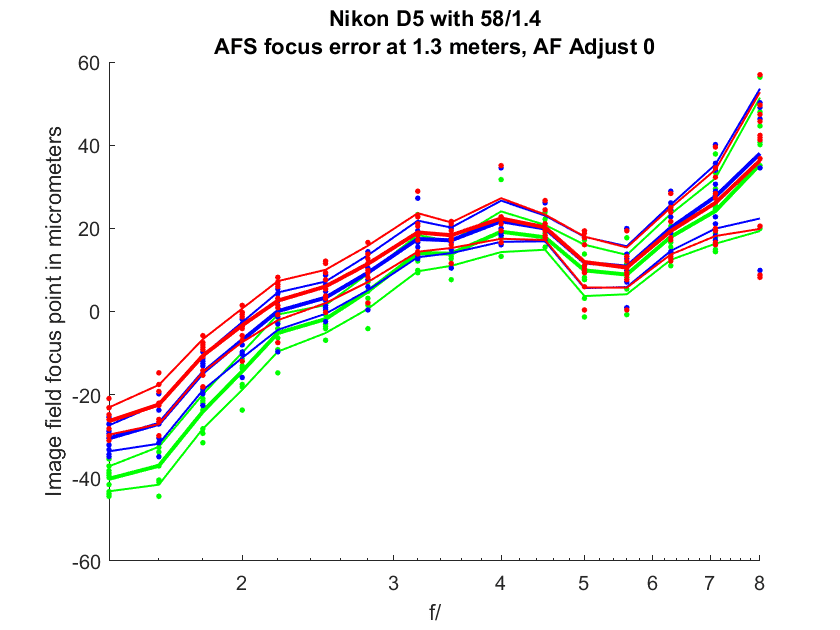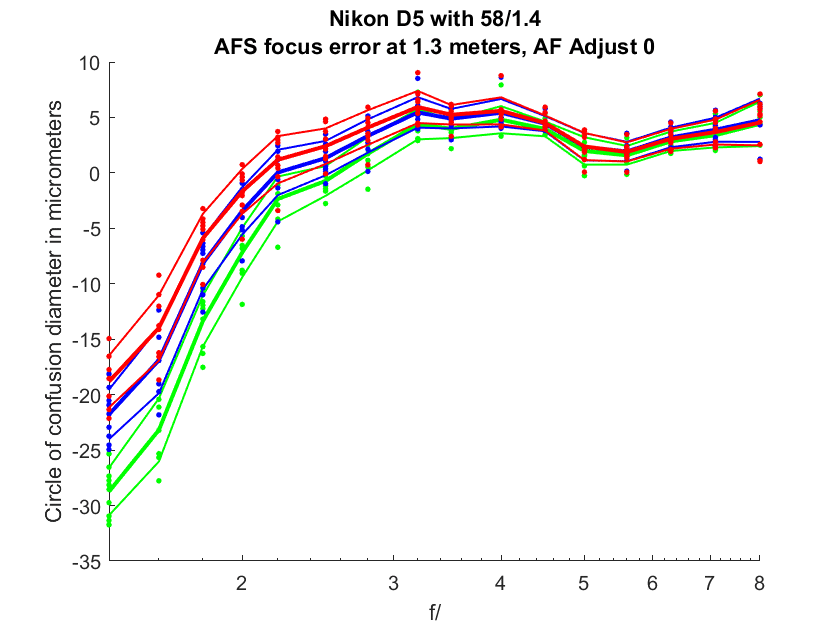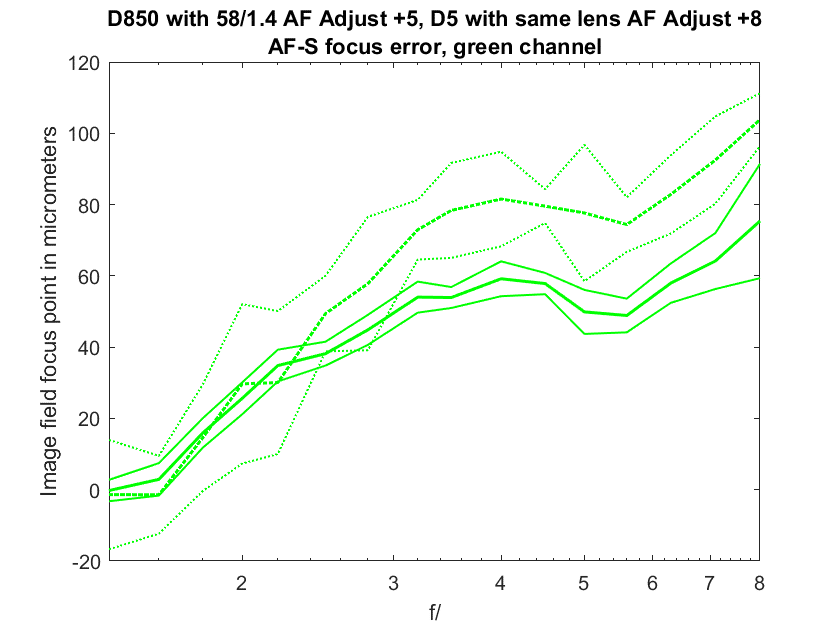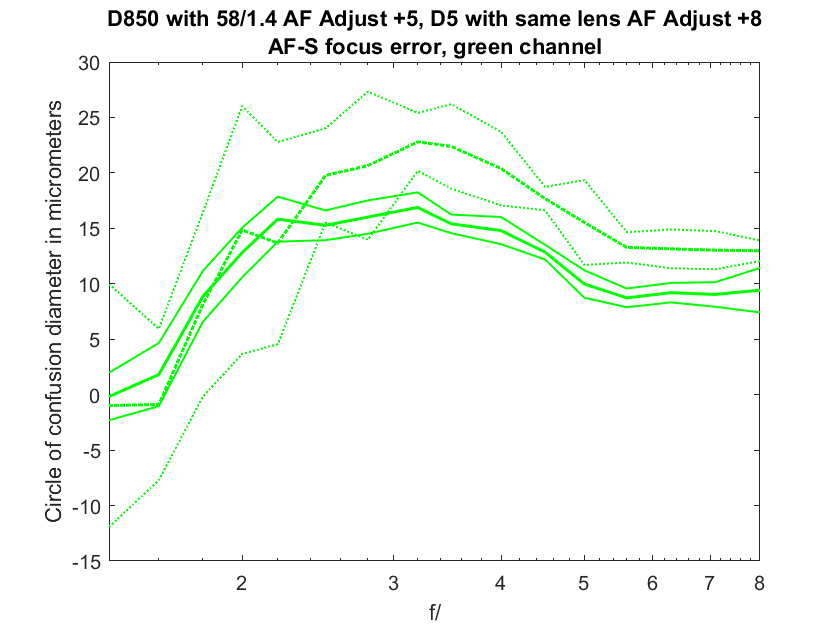This is a continuation of a series of posts on the Nikon D850. You should be able to find all the posts about that camera in the Category List on the right sidebar, below the Articles widget. There’s a drop-down menu there that you can use to get to all the posts in this series; just look for “D850”.
A reader who was looking at the results of the autofocus tests that I’ve been performing with the D850 and the Nikon 58mm f/1.4 lens asked if I’d do a test with that lens and the D5. Not expecting much to change, I did just that:
Cranking in +8 AF adjust and comparing the green channel results to the D850, with the D5 lines solid and the D850 dotted — sorry, the caption is wrong; the D850 took +14 AF Adjust here.
Not only is the variation in the focal plane less with the D5, the camera appears to be partially compensating for the focus shift of the lens. The D5 pixel pitch is about 6.4 micrometers (um) so it would be possible to adjust the AF system to give about one-pixel CoCs from f/2 through f/8.




So it’s safe to say the D850 DOES NOT have the D5 AF system as promised.
And……. given the D5 um it’s just about impossible to take a blurry photo @ > f 2 with the CoCs shown above….
Didn’t Nikon promise the D5 AF in the D850?
https://www.diyphotography.net/nikon-d850-autofocus-system-d5-not-good/
Yep – right here –
From Nikon’s mouth to the class action attorney’s ears…..
https://www.nikonusa.com/en/nikon-products/product/dslr-cameras/d850.html
“The D850 uses the same field-proven ultra-accurate AF system as the flagship D5.”
I interpreted that to mean that the D850 uses the same sensors and algorithms, not that it achieves the same end result.
Same sensor and same algorithms means that it should produce the same tight CoCs.
Now those might not have as much leeway on the D850s density but the results should be the same.
Any chance you could please overlay charts of the D5 and D850 with this lens ? If you haven’t already.
Not if the underlying hardware is different; faster processing should make for tighter feedback loops. But the behavior should be roughly the same. One place where it doesn’t look the same is that it looks like the D5 is partially correcting for focus shift. It may be splitting hairs, but Nikon may not consider that part of the AF system. It all depends on what the meaning of “system” is (with apologies to WJBC). If that’s the case, I’d have to say that that’s pretty weaselly.
Last two graphs in this post.
Thank you – were those already there? Apologies if so.
Yep.